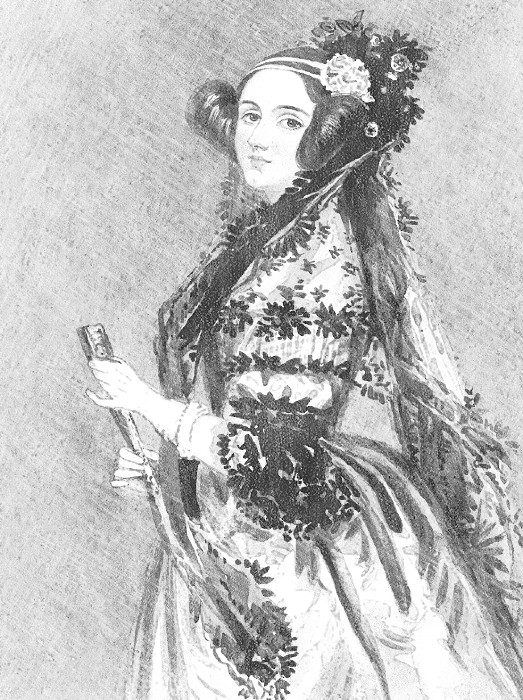Ada Lovelace
Ada Lovelace, an English mathematician and writer, is often referred to as “the first programmer” because she helped revolutionize the trajectory of the computer industry. She is considered the first person to recognize that computers had a much larger potential than mathematical calculation. In 1979, a computer language called “Ada,” made on behalf of the U.S. Department of Defense, was even named after her.
Ada Lovelace (birth name Augusta Ada Byron) was born in London, England on December 10, 1815 to Anne Milbank and the famous poet, Lord Byron. Her father and mother separated months after she was born. Lord Byron moved to Greece where he died when Ada was eight years old. Ada’s childhood was not a traditional one. She was the daughter of one of the most famous European men, she was constantly ill, and had a sharp mind which she used to analyze language and numbers. Her mother had mathematical training and insisted that Ada, who was tutored privately, study mathematics, an unusual education for a woman during this time period.
Mathematician and inventor Charles Babbage, known as “the father of computers,” became a mentor and friend to Lovelace. Babbage was credited with creating the first automatic digital computer, the “Analytical Engine.” An Italian engineer wrote an article about Babbage’s work in French and Babbage gave the article to Lovelace to translate. Not only did Lovelace translate the original French text to English, but she provided her own input, ultimately writing that the machine could be programmed to follow a list of instructions. She hypothesized this programming could work with other things besides numbers. The idea of a machine that could manipulate symbols according to rules marked the important transition from calculation to computation. Lovelace’s notes on the article’s comments were published in 1843 in an English science journal. She used “A.A.L.” (Augusta Ada Lovelace) as her name in the publication. Thanks to Lovelace’s insights, computers have developed over time in ways previously not considered possible.
In 1835, Lovelace married William King with whom she had three children. They socialized with famous people of the time including Michael Faraday and Charles Dickens. However, Lovelace continued to fall ill with breathing and digestive problems. She took months to recover after the birth of her second child and suffered rheumatic attacks.
Lovelace died from uterine cancer on November 27, 1852 and was buried next to her father’s grave. She was only 36 years old. Her contributions to technology weren’t known until a century after her death. The second Tuesday in October each year is now known as Ada Lovelace Day, where the contributions of women to science, technology, engineering and mathematics are honored.


